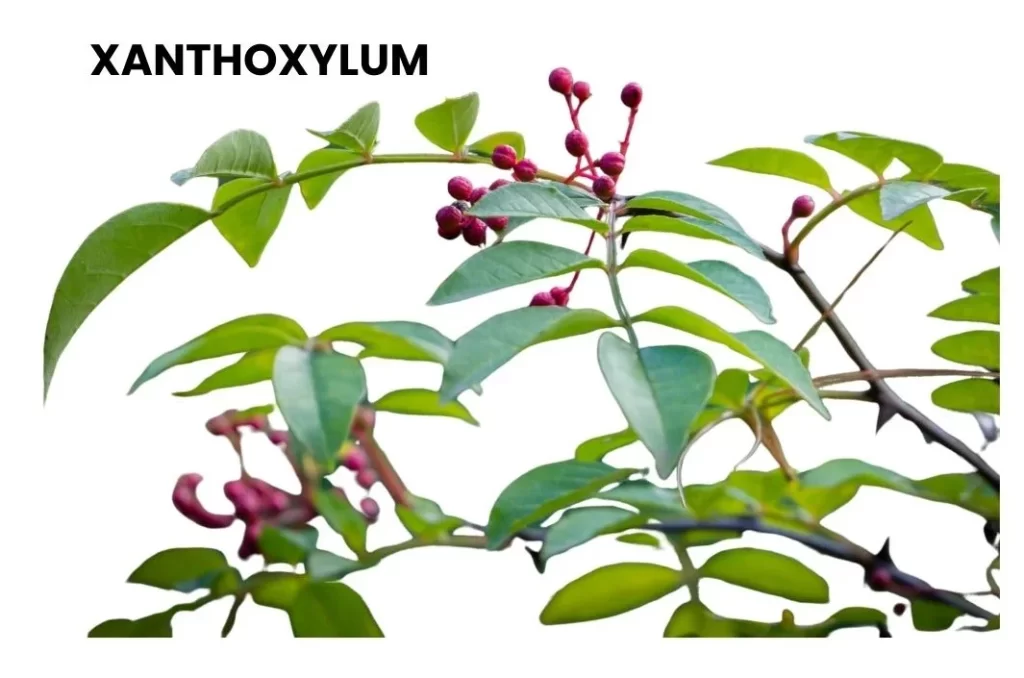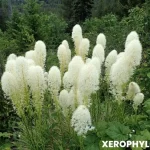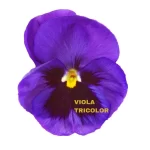Xanthoxylum is a homeopathic remedy known for its specific action on the nervous system and mucous membranes.
It is particularly beneficial for conditions such as paralysis, neuralgic dysmenorrhea, painful hemorrhages, and rheumatic affections.
It is often prescribed for individuals with a spare habit and a delicate, nervous constitution.

Table of Contents
ToggleSOURCE INFORMATION
- Common Name: Prickly Ash
- Family: Rutaceae
Origin: Xanthoxylum is a genus of flowering plants native to various regions around the world, including Asia, North America, and South America.
The exact origin of individual species within the genus varies, but they are commonly found in temperate and tropical climates.
History: Xanthoxylum has a rich history of traditional medicinal use dating back centuries.
Various indigenous cultures have utilized different species of Xanthoxylum for their therapeutic properties.
For example, Native American tribes in North America used the bark and berries of Prickly Ash (Xanthoxylum americanum) to treat various ailments, including rheumatism, toothache, and digestive issues.
Similarly, traditional Chinese medicine has employed Xanthoxylum species, such as Sichuan pepper (Xanthoxylum piperitum), for their warming and circulatory effects.
Cultural Significance: Prickly Ash holds cultural significance in many indigenous cultures where it grows.
It has been valued for its medicinal properties and used in rituals and ceremonies. In addition to its medicinal uses, some species of Xanthoxylum are also used as culinary spices, particularly in Asian cuisines.
Botanical Description: Xanthoxylum species are characterized by their thorny branches, pinnate leaves, and small clusters of flowers that develop into clusters of berries.
The bark, leaves, and berries of different species contain various bioactive compounds with medicinal properties, including alkaloids, flavonoids, and essential oils.
Modern Use: In modern times, Xanthoxylum continues to be used in herbal medicine practices around the world.
It is often employed for its analgesic, anti-inflammatory, and digestive properties.
Additionally, some species are used in culinary applications, adding flavour and heat to dishes.
SPHERE OF ACTION AND PATHOGENESIS
This remedy primarily acts on the nervous system and mucous membranes.
It stimulates excessive mucous secretion from glands with ducts opening into the mouth and affects the female genital system.
CONSTITUTION
- It is most effective for individuals who are thin, emaciated, and nervous, with a predisposition towards nervous constitution.
- These individuals often have Psoric and Syphilitic miasms in their background.
WHAT IS CONSTITUTION IN HOMOEOPATHY?
GUIDING SYMPTOMS
Neuralgic Dysmenorrhoea
- Effective for women with a delicate, nervous nature.
- Characterized by early, thick, blackish menstrual flow, often lasting for about two weeks with alternate-day intervals.
- Severe pain along the genito-crural nerve, shooting down to the knee, unaffected by posture.
- Accompanied by backache and headache, with a desire for deep breaths during pain.
- May involve left-sided ovarian neuralgia.
Leucorrhoea
- Occurs instead of menstruation.
- Other remedies to consider: Cocculus, Iodum, Nux-Mos, Phos.
Headache
- Triggered by menstrual suppression.
- Sensation of head being tightly bound.
- Fullness in the head, with occipital headache.
- Often accompanied by sleepiness, flatulence, and ringing in the ears.
- Aggravated in the morning, relieved by cold water and fresh air.
Nervous Symptoms
- Left-sided hemiplegia and numbness.
- Neuralgic pain resembling electric shocks throughout the limbs.
- Sciatica worsened by hot weather.
Ailments From: Nerve injuries, getting wet, menstrual suppression, overeating, and neurasthenia.
REMEDY RELATIONSHIP
Similar remedies include Arnica, Cuprum, Chamomilla, and Staphysagria.
DOSE
Xanthoxylum is typically prescribed in various potencies according to the individual case, usually in dilutions ranging from 6C to 200C.
Frequently Asked Questions
What conditions is Xanthoxylum indicated for?
- Xanthoxylum is indicated for paralysis, neuralgic dysmenorrhea, painful hemorrhages, and rheumatic affections, especially in individuals with a spare habit and nervous constitution.
What are the key characteristics of Xanthoxylum?
- Key characteristics include mental depression, head fullness, neuralgia, gastrointestinal disturbances, early and painful menses, and respiratory symptoms.
How should Xanthoxylum be dosed?
- Xanthoxylum is typically prescribed in various potencies, such as 6C to 200C, depending on the individual case and symptoms.
Meaning of Difficult Words
- Neuralgic: Relating to or affected by neuralgia, a sharp, sudden pain along the course of a nerve.
- Dysmenorrhea: Painful menstruation.
- Paralysis: Loss of muscle function in part of the body.
- Hemiplegia: Paralysis of one side of the body.
- Tenesmus: Painful, ineffective straining to empty the bowels or bladder.
- Neurasthenia: A condition characterized by chronic fatigue and weakness, often associated with depression or anxiety.
- Aphonia: Loss of voice due to disease of the larynx or absence of the vocal cords.
- Crural: Relating to the leg or thigh.













Leave a Reply